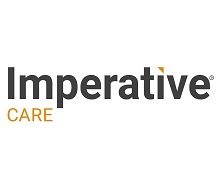 Imperative Care has announced multiple new pieces of data from studies evaluating its Zoom stroke solution, presented at the ongoing Society of NeuroInterventional Surgery (SNIS) annual meeting (31 July–4 August, San Diego, USA).
Imperative Care has announced multiple new pieces of data from studies evaluating its Zoom stroke solution, presented at the ongoing Society of NeuroInterventional Surgery (SNIS) annual meeting (31 July–4 August, San Diego, USA).
“We are pleased to see the results from these studies further supporting that the Zoom stroke solution is associated with improved procedural outcomes,” said Ariel Sutton, general manager of Imperative’s stroke business. “These findings are an important step forward in our continued efforts to build a strong body of clinical evidence and in our mission to innovate every aspect of the stroke thrombectomy procedure to improve patient outcomes.”
A presentation at SNIS 2023 saw Mais Al-Fawaz (University of Kentucky, Lexington, USA) deliver data indicating that specific intracranial 0.088-inch guide catheter positioning can influence final reperfusion outcomes.
Findings from a multicentre study involving 428 patients who received an aspiration thrombectomy for ischaemic stroke revealed a significantly higher first-pass effect with catheter placement in the petrous internal carotid artery (ICA) segment or further distal, versus placement in the cervical ICA segment or more proximal (43.2% vs 25.5%, p<0.001). The former catheter positioning was also associated with a better rate of thrombolysis in cerebral infarction (TICI) ≥2c reperfusion (71.2% vs 65%, p=0.194); significantly shorter median time from groin puncture to final reperfusion (21 minutes vs 35.5 minutes, p<0.001); and definitively lower total median number of passes (two vs three, p<0.015).
“This multicentre analysis further supports the critical importance of intracranial positioning of the guide catheter in achieving a swift recanalisation with higher first-pass effect and lower procedural time in patients with large vessel occlusion stroke,” said a lead author of the study, Shahram Majidi (Mount Sinai, New York City, USA).
“The Zoom 88 large distal platform is the only 0.088-inch guide catheter that can access the intracranial anatomy and get closer to the clot,” said James Milburn (Ochsner Medical Center, Jefferson, USA), an additional lead author of the study. “This has helped me gain even more control over my stroke procedures by allowing me to navigate to the clot more quickly, and reduce the risk of clot shearing and distal embolism.”
Another SNIS presentation, from Rami Morsi (University of Chicago Medicine, Chicago, USA), revealed early data suggesting that Imperative’s Zoom RDL radial access platform is safe, effective and technically feasible across a range of neurointerventional procedures, including complex ones, with low complication rates. Morsi presented results from a single-centre experience using Zoom RDL, which Imperative claims is the first radial access platform developed specifically for ischaemic stroke treatment.
In addition, preliminary data also presented at SNIS indicate that the Zoom aspiration catheters are safe and highly effective in treating distal vessel occlusion (DVO) stroke via an endovascular thrombectomy. Results from a three-institution retrospective review of 78 acute stroke patients with DVOs who were treated with a Zoom aspiration catheter (Zoom 71, 55, 45 and 35) were presented by Daryl Goldman (Mount Sinai, New York City, USA), and demonstrated that treatment with Zoom aspiration catheters resulted in high rates of reperfusion and fast procedure times, with low rates of symptomatic intracranial haemorrhage.
As per an Imperative press release, further abstracts presented at SNIS showcased the clinical utility of the Zoom access and aspiration catheters—including a benchtop analysis evaluating the effect of intracranial flow parameters on the left side of the brain using various guide catheters for aspiration thrombectomy, which was presented by Holly Berns (Northern Arizona University, Flagstaff, USA). The evaluation showed that distal placement of a Zoom 88 can translate to the same or better flow reduction than a balloon guide catheter positioned in the proximal ICA, without the additional time required to set up the balloon.
Finally, data from a single-centre evaluation—presented by Sonam Thind (University of Chicago Medicine, Chicago, USA) at SNIS—showed that the Zoom 45 aspiration catheter was technically feasible, safe and effective for accessing the middle meningeal artery in patients with subdural haematomas.













